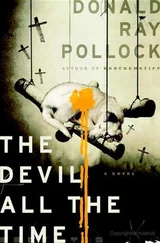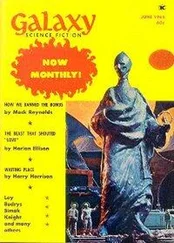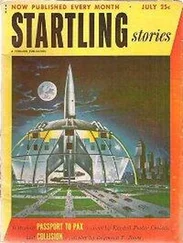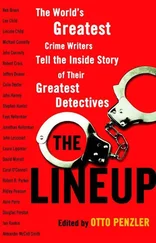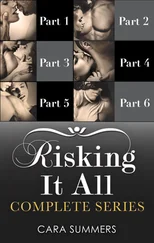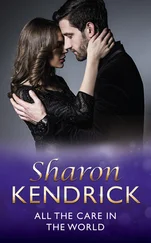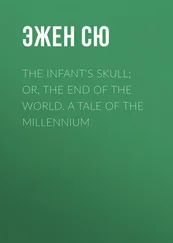THE TOWN IS TERRACED IN THE HILL, ALONG THE RIVER, A FACTORY town of clapboard houses and public buildings faced in red stone. There is a one-room library called the Lyceum. There are several taverns made from porched homes, Miller and Bud signs hanging in neon in the front windows. Down at water’s edge sits the old brassworks, a long two-story brick building with a tower at one end and it is behind locked fences and many of its windows are broken. The river is frozen. The town is dusted in new snow. Along the sides of the streets the winter’s accumulated snow is banked high as a man’s shoulder. Smoke drifts from the chimneys of the houses and is quickly sucked into the sky. The wind comes up off the river and sweeps up the hill through the houses.
A school bus makes its way through the narrow hill streets. The mothers and fathers stand on the porches above to watch the bus accept their children. It’s the only thing moving in the town. The fathers fill their arms with firewood stacked by the front doors and go back inside. Trees are black in the woods behind the homes; they are black against the snow. Sparrow and finch dart from branch to branch and puff their feathers to keep warm. They flutter to the ground and hop on the snow crust under the trees.
The children enter the school through the big oak doors with the push bars. It is not a large school but its proportions, square and high, create hollow rooms and echoing stairwells. The children sit in their rows with their hands folded and watch their teacher. She is cheery and kind. She has been here just long enough for her immodest wish to transform these children to have turned to awe at what they are. Their small faces have been rubbed raw by the cold; the weakness of their fair skin is brought out in blotches on their cheeks and in the blue pallor of their eyelids. Their eyelids are translucent membranes, so thin and so delicate that she wonders how they sleep, how they keep from seeing through their closed eyes.
She tells them she is happy to see them here in such cold weather, with a hard wind blowing up the valley and another storm coming. She begins the day’s work with their exercise, making them squat and bend and jump and swing their arms and somersault so that they can see what the world looks like upside down. How does it look? she cries, trying it herself, somersaulting on the gym mat until she’s dizzy.
They are not animated but the exercise alerts them to the mood she’s in. They watch her with interest to see what is next. She leads them out of the small, dimly lit gymnasium through the empty halls, up and down the stairs, telling them they are a lost patrol in the caves of a planet somewhere far out in space. They are looking for signs of life. They wander through the unused schoolrooms, where crayon drawings hang from one thumbtack and corkboards have curled away from their frames. Look, she calls, holding up a child’s red rubber boot, fished from the depths of a classroom closet. You never can tell!
When they descend to the basement, the janitor dozing in his cubicle is startled awake by a group of children staring at him. He is a large bearish man and wears fatigue pants and a red plaid woolen shirt. The teacher has never seen him wear anything different. His face has a gray stubble. We’re a lost patrol, she says to him, have you seen any living creatures hereabouts? The janitor frowns. What? he says. What?
It is warm in the basement. The furnace emits its basso roar. She has him open the furnace door so the children can see the source of heat, the fire in its pit. They are each invited to cast a handful of coal through the door. They do this as a sacrament.
Then she insists that the janitor open the storage rooms and the old lunchroom kitchen, and here she notes unused cases of dried soup mix and canned goods, and then large pots and thick aluminum cauldrons and a stack of metal trays with food compartments. Here, you can’t take those, the janitor says. And why not, she answers, this is their school, isn’t it? She gives each child a tray or pot, and they march upstairs, banging them with their fists to scare away the creatures of wet flesh and rotating eyes and pulpy horns who may be lying in wait around the corners.
In the afternoon it is already dark, and the school bus receives the children in the parking lot behind the building. The new streetlamps installed by the county radiate an amber light. The yellow school bus in the amber light is the color of a dark egg yolk. As it leaves, the children, their faces indistinct behind the windows, turn to stare out at the young teacher. She waves, her fingers opening and closing like a fluttering wing. The bus windows slide past, breaking her image and re-forming it, and giving her the illusion of the stone building behind her sliding along its foundations in the opposite direction.
The bus has turned into the road. It goes slowly past the school. The children’s heads lurch in unison as the driver shifts gears. The bus plunges out of sight in the dip of the hill. At this moment the teacher realizes that she did not recognize the driver. He was not the small, burly man with eyeglasses without rims. He was a young man with long light hair and white eyebrows, and he looked at her in the instant he hunched over the steering wheel, with his arms about to make the effort of putting the bus into a turn.

THAT EVENING at home the young woman heats water for a bath and pours it in the tub. She bathes and urinates in the bathwater. She brings her hands out of the water and lets it pour through her fingers. She hums a made-up tune. The bathroom is large, with wainscoting of wood strips painted gray. The tub rests on four cast-iron claws. A small window high on the wall is open just a crack and through it the night air sifts into the room. She lies back and the cold air comes along the water line and draws its finger across her neck.
In the morning she dresses and combs her hair back and ties it behind her head and wears small opal teardrop earrings given to her for her graduation from college. She walks to work, opens up the school, turns up the radiator, cleans the blackboard, and goes to the front door to await the children on the yellow bus.
They do not come.
She goes to her teaching room, rearranges the day’s lesson on the desk, distributes a sheet of stiff paper to each child’s desk. She goes back to the front door and awaits the children.
They are nowhere in sight.
She looks for the school janitor in the basement. The furnace makes a kind of moaning sound, there is rhythmic intensification of its running pitch, and he’s staring at it with a perplexed look on his face. He tells her the time, and it is the time on her watch. She goes back upstairs and stands at the front door with her coat on.
The yellow bus comes into the school driveway and pulls up before the front door. She puts her hand on the shoulder of each child descending the steps from the bus. The young man with the blond hair and eyebrows smiles at her.
There have been sacred rites and legendary events in this town. In a semi-pro football game a player was killed. A presidential candidate once came and spoke. A mass funeral was held here for the victims of a shoe-factory fire. She understands the new bus driver has no knowledge of any of this.
ON SATURDAY MORNING the teacher goes to the old people’s home and reads aloud. They sit there and listen to the story. They are the children’s faces in another time. She thinks she can even recognize some of the grandmothers and grandfathers by family. When the reading is over those who can walk come up to her and pluck at her sleeves and her collar, interrupting one another to tell her who they are and what they used to be. They shout. They mock one another’s words. They waggle their hands in her face to get her to look at them.
Читать дальше


